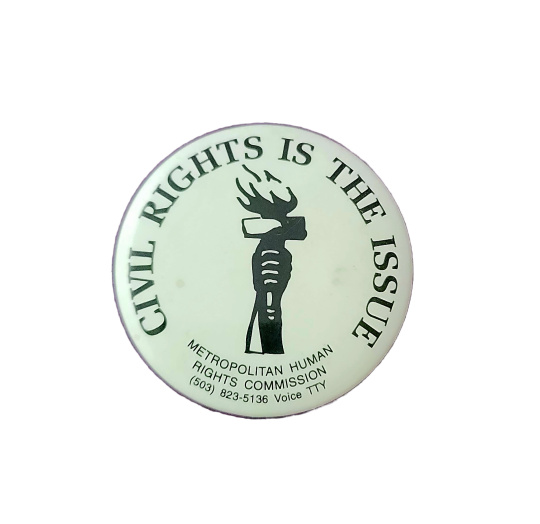#llgc
Explore tagged Tumblr posts
Text








vintage pins found at a tiny thrift store in Oregon City for 10cents a piece
#vintage pins#vintage#pins#civil rights#pay equity#llgc#occupy#occupy wall street#occupy washington#revolutionary#lgbtq#ok to rb#my pics
86 notes
·
View notes
Photo

HAPPY BIRTHDAY 🎂 CUZIN! WE BOUT TO GET FUCK UP TONIGHT ALL FOR YOU CUZIN ... WISH YO FAT AZZ WAS HERE WITH US EVEN THO YOU WIT US .. MAY YOU REST PEACEFULLY #LLGC CURTIS LEE GAINES 🕊🕊🕊BITCCCH!!! https://www.instagram.com/p/CKrwKkbsoQN/?igshid=nbgdh0twbv21
0 notes
Photo

Give this a try—Push your design’s proportions just a little to give it a more interesting silhouette as well as a more elegant and stylish look. #BGdesigninsmallbites https://www.instagram.com/p/CXhtK3-lLGC/?utm_medium=tumblr
23 notes
·
View notes
Text
The Drowning of Capel Celyn
There are a surprising number of "lost" villages lying under Welsh reservoirs. Many of them, such as Llanwddyn in Montgomeryshire and Ynysyfelin, north of Merthyr Tydfil, were far more substantial than Capel Celyn, the hamlet which lies beneath the waters of Llyn Celyn in Snowdonia. It was the combination of time and place that made Tryweryn such a symbolic moment in Welsh history, and which sets Capel Celyn apart from all the other lost settlements.
The early 1960s in Wales was a period when a renewed interest in devolution coincided with a sharp decline in the number of Welsh speakers. As one of the last virtually monoglot Welsh communities, Capel Celyn came to symbolise both the pressure on the language and the apparent powerlessness of Welsh MPs to protect Welsh interests.
Despite near unanimous opposition from Welsh politicians, mass protests and an attempt to bomb the site of the dam, the plans of Liverpool Corporation moved forward relentlessly. For Plaid Cymru (the social-democratic political party in Wales), Tryweryn was to prove transformational - although that was not apparent at the time. The results of the 1964 general election, held while the controversy was at its height, were disappointing for the party - even in Meirionnydd, where the reservoir is located.
However, the campaign led to an influx of new party members, and the decision to reject the use of civil disobedience tactics during the campaign earned the party credibility and respect in Welsh-speaking communities that had previously viewed Plaid Cymru with suspicion. Even so, it was Labour which swept the board in rural Wales in the 1966 general election, the first to be held after the completion of the project. Just a few months later though, Plaid Cymru won their first ever seat in parliament in the Carmarthen by-election. It was a victory which might never have occurred had Capel Celyn not disappeared beneath the waters of Llyn Celyn.
Timeline
On 20th December 1955, the Liverpool Daily Post reported that the Liverpool Corporation intended to flood Capel Celyn, a small village in rural north Wales. The scheme involved damming the valley at one end to form what is now the Llyn Celyn reservoir. The 67 Welsh-speaking residents of the area were shocked by the news that their valley which was reported one of the where Welsh was dominant wanted to be drowned.

Alex Dellow / Stringer, © Getty Images


Tryweryn Valley - The little hamlet of Capel Celyn, which will be submerged when the valley is flooded for the reservoir - July 1963 - Western Mail and Echo Copyright

Tryweryn Valley - Mr Jones Parry, the postmaster, outside his post office at Capel Celyn, which will be submerged when the valley is flooded for the reservoir - 10th December 1956
The quiet village sprung into action setting up a committee shortly after the new year. The Tryweryn Defence Committee was established to oppose the drowning. Other branches set up included the Capel Celyn Defence Committee and the Liverpool branch of the Tryweryn Defence Committee. On 7 November 1956 the Committee sent a delegation of three – Gwynfor Evans, the president of Plaid Cymru, Rev R Tudur Jones and Cllr Dafydd Roberts – to address Liverpool City Council. But Gwynfor Evans was shouted down and the three were escorted from the chamber.
The Plaid Cymru 'Keep Tryweryn' rally at Bala, 4 October 1956 - Geoff Charles © LLGC/NLW
Capel Celyn and local supporters took to the streets of Liverpool during a second meeting with the council. Liverpool had a population of 750,000 people in 1955 and would soon require 65 million gallons of water per day. Post-war Liverpool had some of the worst slums in Britain and the city argued for more water for improved sanitation. This was not the first time Liverpool had looked to Wales for water. Eighty years earlier they had turned to Lake Vyrnwy which was only 18 miles away, for drinking water. Llanwddyn was drowned, losing two chapels, three pubs, 10 farms and 37 houses.
(Further history on Llanwddyn visit http://www.lake-vyrnwy.com/history.html)

Protest in Liverpool attempting to stop the flooding of the Tryweryn Valley, 21 November 1956 - Geoff Charles © LLGC/NLW
On 19th December 1956, Liverpool Corporation's Tryweryn Reservoir Bill was deposited to parliament as a private member's bill. In January 1957, it began its journey through the parliamentary system. By obtaining authority through an Act of Parliament, Liverpool City Council avoided having to gain consent from the Welsh planning authorities.

Tenant farmer and local councillor David Roberts (right) explain the extent of the proposed Llyn Celyn reservoir on 27 February 1957 - Alex Dellow / Stringer, © Getty Images
On 3rd July 1957, the focus switched to London where the bill received its second reading in the House of Commons. It was passed by 166 votes to 117 without any support from the 36 Welsh MPs. The bill would allow the compulsory purchase of land to build a reservoir to supply water to England. The construction was a five-year project costing around £17m.

English-only signpost reminding the Capel Celyn residents of the fate of their village with a local resident writing their opinion on the sign, 14 November 1963 - Geoff Charles, © LLGC/NLW
On 22nd September 1962, indignation at the proposed scheme was felt beyond the Welsh-speaking village. David Pritchard and David Walters from Gwent in Mid Wales damaged site equipment to try and delay the process. They were arrested and fined £50 each, paid for by well-wishers. Yet it would be wrong to say that everyone opposed the flooding. Some Welsh industrialists believed it would regenerate the north-west Wales economy. Bala Town Council passed a motion supporting the construction of the reservoir, believing it would provide much-needed employment. While many of those forced to leave their homes were angry and traumatised, others accepted the opportunity to leave for better housing.

John and Mabel Evans standing outside their home for the last time, 27 July 1961. They left for a home provided for by Liverpool Corporation - Geoff Charles, © LLGC/NLW
Towards the end of 1962, homes in the village of Capel Celyn were demolished as the planned flooding drew near. The fight had lasted eight years. The 67 people who lived in Capel Celyn were displaced. A large crowd turned up for the final service at the chapel and the school, Ysgol Capel Celyn, which had educated generations of the local community, closed its doors for the last time.

The last days of Capel Celyn School, 1 November 1962 - Geoff Charles, © LLGC/NLW

A family leaving Capel Celyn for the last time in 1956 - Geoff Charles, © LLGC/NLW

Cattle being sold at the last sale at Gwerngenau Farm - Geoff Charles, © LLGC/NLW

A large congregation attended the last ever service held at Capel Celyn's chapel on 28 September 1963. The last wedding had taken place in the chapel a fortnight before - Geoff Charles, © LLGC/NLW

Deiniol Prysor Jones playing inside the ruins of the chapel in November 1963 - Geoff Charles, © LLGC/NLW

Construction work underway at Tryweryn. Tyddyn Bridge Halt is located at the background of the image which is now located right beneath the dam wall.

A party of Liverpool officials inspect progress at Tryweryn

Workmen drill into the ground during construction work on Liverpool Corporation's new reservoir in 1961
On 10th February 1963, While the reservoir dam in Cwm Tryweryn was under construction, it was the actions of three young men that were making the headlines. Aberystwyth student Emyr Llewelyn, farmer's son Owain Williams, and former RAF military policeman John Albert Jones, formed the shadowy group ‘Mudiad Amddiffyn Cymru’ (MAC), which translates to Movement for the Defence of Wales. MAC will be discussed in a separate blog post in detail.
On the night of 9 February, they travelled through blizzard conditions to the construction site, and planted a 5lb (2.3kg) bomb at an electricity transformer powering the whole project. But within a week of the explosion, Llewelyn was under arrest, after a police patrol noted the registration of the car hired by the student in Aberystwyth. Llewelyn refused to name his co-conspirators, and was given a year-long jail term.
However, on the day he was sentenced, Williams and Jones struck again, blowing up an electricity pylon at the village of Gellilydan near Trawsfynydd in Gwynedd. This time they were both apprehended. Williams was given a one year sentence, while Jones received three years on probation. However, the actions of the bombers merely delayed the reservoir project.
This was not the first time the project was sabotaged.

Alderman Gwynfor Evans, president of Plaid Cymru, shakes hands with David Pritchard after a case at Bala magistrates' court in July 1963 when when Prirchard and David Walters (middle) were each fined £50 for draining the oil from a transformer at Tryweryn - WME Copyright
On 21st October 1965, the Llyn Celyn reservoir was officially declared open, with a ceremony laid on to mark the occasion. The dignitaries from Liverpool were present, but the Welsh establishment stayed away. Alderman Sefton from Liverpool Corporation was to address the crowd in a planned 45-minute ceremony. However, it didn’t last more than three minutes as protesters cut the microphone wires and ran down the escarpment to disrupt the opening ceremony proceedings.

Protests on the day of the official opening of the dam on 21 October 1965.
Certain concessions to Wales were made following the building of the Llyn Celyn reservoir. The position of secretary of state for Wales was created, the DVLA opened in Swansea, the first Welsh Language Act was passed and the Royal Mint moved to Llantristant all before 1970. There was also a huge investment in steel production at Llanwern in South Wales.
With concern for the Welsh language mounting in the 1960s, the Welsh Language Act 1967 was passed, giving some legal protection for the use of Welsh in official government business. The Act was based on the Hughes Parry report, published in 1965, which advocated equal validity for Welsh in speech and in written documents, both in the courts and in public administration in Wales. However the Act did not include all the Hughes Parry report's recommendations. Prior to the Act, only the English language could be spoken at government and court proceedings.
The Welsh Language Act 1993 put the Welsh language on an equal footing with the English language in Wales with regard to the public sector. The Laws in Wales Acts 1535–1542 had made English the only language of the law courts and other aspects of public administration in Wales. Although the Welsh Language Act 1967 had given some rights to use Welsh in court, the Welsh Language Act 1993 was the first to put Welsh on an equal basis with English in public life.
The Act set up the Welsh Language Board, answerable to the Secretary of State for Wales, with the duty to promote the use of Welsh and to ensure compliance with the other provisions. Additionally, the Act gave Welsh speakers the right to speak Welsh in court proceedings under all circumstances. The previous Act had only given limited protection to the use of Welsh in court proceedings. The Act obliges all organisations in the public sector providing services to the public in Wales to treat Welsh and English on an equal basis; however it does not compel private businesses to provide services in Welsh: that would require a further Language Act.
Some of the powers given to the Secretary of State for Wales under this Act were later devolved to the National Assembly for Wales (Cynulliad Cenedlaethol Cymru), but others have been retained by Westminster.

View of Cwm Tryweryn prior to the flooding of the valley

Llyn Celyn, Tryweryn Valley. Dam under construction, the construction yard and workers’ housing are in the foreground. On the left the trackbed of the former Bala & Ffestiniog Railway, closed in 1960 to allow construction.

View of Llyn Celyn reservoir and dam shortly after completion, looking west. Note the straining tower and the overflow to its left.
On the fiftieth anniversary of the announcement that the Tryweryn valley was to be drowned (19th October 2015), Liverpool City Council issued a formal apology on behalf of its predecessor for the ‘insensitivity’ of the scheme which had such a destructive impact on the community of Capel Celyn. The personal impact on the residents of Capel Celyn was enormous; many were forced to leave homes that had been in their families for generations.
Their loss, and all that it represented, has become iconic in Welsh politics and in the struggle over the Welsh language. ‘Cofiwch Dryweryn’ (Remember Tryweryn) remains one of the most powerful slogans in the Welsh language and is seen as a rallying call of Welsh nationalism. It has also influenced one of the most recognised welsh bands, Manic Street Preachers to write a song about Tryweryn called ‘Ready for Drowning’. I have decided to include the lyrics of their song below as I feel its is very powerful.
Manic Street Preachers - Ready for Drowning
https://www.youtube.com/watch?v=uU0GMTOYe0w
Here's a true story Said someone to me yesterday Said he'd heard it in a taxi Must have had him at my mercy Drown that poor thing Put it out of its misery Condemn it to its future Deny its history Deny its history So where are we going We're not ready for drowning So where are we going We're not ready for drowning Look through my venetian blinds Dusting the past off of my mind Seeing orange everywhere I'd go to Patagonia But it's harder there I'll do anything to prove I care Fascinated by good Destroyed by evil What is there to believe in So where are we going We're not ready for drowning So where are we going We're not ready for drowning I will bring the whole edifice down on their unworthy heads So where are we going We're not ready for drowning So where are we going We are not waving we're drowning
2 notes
·
View notes
Photo

... Day whatever of this covid-19 lockdown and I have lost track of time; I have no idea what day of the week, month or year today is. Throwing back to the days when I did... 📸: @siiibu 🖤💜 (at Mhluzi, Mpumalanga, South Africa) https://www.instagram.com/p/CAEK61-lLGC/?igshid=mtwrkztc3bqq
0 notes
Photo

W. Thelwall Thomas and friends by LlGC ~ NLW https://flic.kr/p/6D1mYz
0 notes
Photo

Old GAP Hoodie. Fly to Austria today. ⚡️ Thanks again. More fresh item now in shop, please visit etsy at thriftedlyanelles. #spektormodernxjunkies #thriftedlyanelles https://www.instagram.com/p/BtyLM4-llgC/?utm_source=ig_tumblr_share&igshid=x3kykye45sk5
0 notes
Photo

My five millon stars room for last night! . . #vanlife #vanlifediaries #projectvanlife #homeiswhereyouparkit #roadtrippin #adventuremobile #vanlifers #vanliving #vanlifeisawesome #camper #camperlife #camperlifestyle #thevanlifestyle #campervan #offgrid #vancrush #vanlifemovement #vanlifeeurope #roadtrip #travelinavan #lifeontheroad #outdoorliving #vanlifeexplorers #mobilehomes #homeonwheels #vanlifeideas #vanlifestyle #vanlifemagazine #vanlifeexplorers (presso Embalse de Yesa) https://www.instagram.com/p/Bn6m-llgcs-/?utm_source=ig_tumblr_share&igshid=12y0m3htkzh5e
#vanlife#vanlifediaries#projectvanlife#homeiswhereyouparkit#roadtrippin#adventuremobile#vanlifers#vanliving#vanlifeisawesome#camper#camperlife#camperlifestyle#thevanlifestyle#campervan#offgrid#vancrush#vanlifemovement#vanlifeeurope#roadtrip#travelinavan#lifeontheroad#outdoorliving#vanlifeexplorers#mobilehomes#homeonwheels#vanlifeideas#vanlifestyle#vanlifemagazine
0 notes
Link
So, here there are 73 previously unseen location pics from the Troughton story The Abominable Snowmen, made public by the National Library of Wales on their webstie. Enjoy.
#classic who#two#the abominable snowmen#behind the scenes#patrick troughton#frazer hines#deborah watling#etc#yeti#national library of wales
0 notes
Link
#awesome!#it might be time to reactivate the middle welsh reading and translation group#looking forward to the digitized online version#oh#LlGC#i always loved you so much!#wales
0 notes
Photo


Love Live Graphic Challenge
Since I was a little girl, I acted before I spoke. Sometimes I inconvenienced those around me. I wasn’t very good at expressing myself and was awkward… But that’s when I found songs! Songs allow you to honestly convey your feelings. By singing, you can feel the same as others. By singing, you can connect with others. That’s why I love songs. I love singing!
#4 ♥ Favorite second year girl is totally Honkers, duh!
#llgc#since umi is my best girl i didn't want to put her twice in the list#and while umi is best girl for me#honoka is the one i can really relate to#she's amazing and i love her so much#i love her pls protect her#honoka#kousaka honoka#honoka kousaka#honoka edit#honk if u love honoka#mine
3 notes
·
View notes
Text
Bet Fach, Llangeitho who is 92 years old
Teitl Cymraeg/Welsh title: Bet Fach, Llangeitho yn 92 mlwydd oed Ffotograffydd/Photographer: John Thomas (1838-1905) Dyddiad/Date: [ca. 1885] Cyfrwng/Medium: Negydd gwydr / Glass negative Maint/Dimensions: 11 x 8.5 cm. Cyfeiriad/Reference: jth01672 Rhif cofnod / Record no.: 3362623
0 notes
